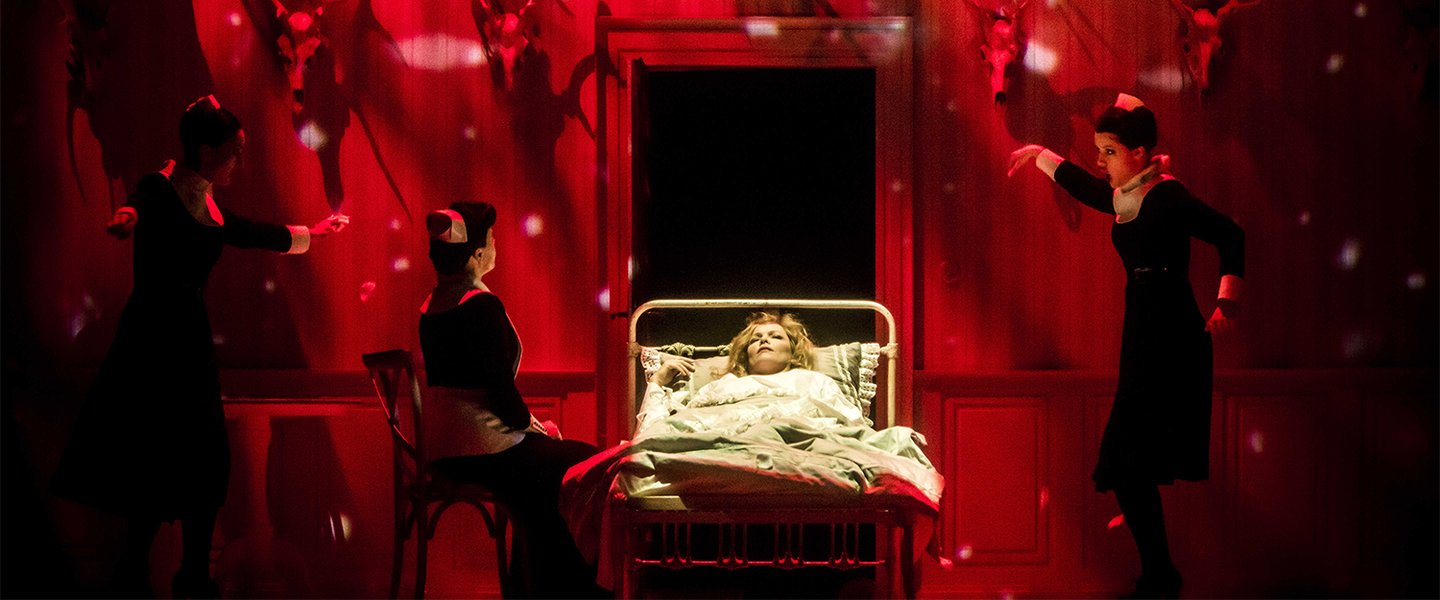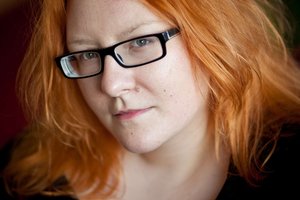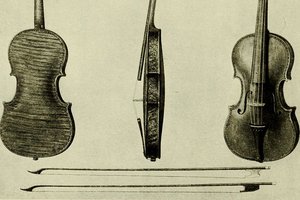Polish opera’s success in New York
Mariusz Treliński is the first Pole to direct at the Metropolitan Opera. Following the success of his production of “Iolanta/Bluebeard’s Castle,” Met Opera chief Peter Gelb invited him to inaugurate its next season. “I would not want my work to be associated with my most recent success at the Met. What I have been doing all along represents a sequence of many important events,” Mariusz Treliński tells Polska.pl.
The 2016 season will be inaugurated in September with Wagner’s “Tristan und Isolde” directed by the Pole. The director of the New York Opera invited him to direct the opera that will open the new season after a dress rehearsal of the double bill “Iolanta/Bluebeard’s Castle.” The production, which premiered at the end of January, won critical acclaim in the US. Anthony Tommasini of the New York Times praised Anna Netrebko who sang Iolanta and Piotr Beczała’s role of Vaudemont, noting that a few days’ delay caused by a blizzard warning may have “undermined the energy” of the performance . Nadja Michael’s part as Judith was also acclaimed.
A reformer of the Polish opera, who enriched traditional and somewhat anachronic pieces with elements of ballet, video installations, beautiful stage design and references to contemporaneity, regards the offer from the Metropolitan Opera as a crowning of many years of his work. He began to change Teatr Wielki-Polish National Opera in 1999 when he started to work there. His international career was launched by the success of the production of “Madame Butterfly” in the Washington National Opera in 2001. “Since then I have had the opportunity to work with the greatest operatic artists, such as the signers Anna Netrebko or Plácido Domingo, conductors of such rank as Daniel Barenboim, Valery Gergiev, Lorin Maazel or Carlo Rizzi. For me, personally, it has been the most important 15 years which have led to the decision to invite me to direct at the Metropolitan Opera,” Treliński tells Polska.pl.
Karolina Kowalska, Polska.pl: In the Łodz Film School you heard “Whatever you do, you will always remain a Polish director,” which supposedly meant that world stages are beyond the reach of Poles.
Mariusz Treliński*: This sentence, said half-jokingly by professors, echoed a depressive reality. During martial law, the last bar closed at 9 pm, and the only entertainment was offered by “Casanova,” a night club located behind metal doors, where visitors could get stabbed in the back with a knife. So we used to stay inside the student dormitory and engage in endless discussions going on until the wee hours. In the film school we watched the phenomenal films by Antonioni and Visconti, while outside the school we were confronted by drab existence of despair. When I read Lem’s Solaris for the first time I saw an inscription at the bottom of the text which read: Zakopane, June 1959 – June 1960. It made me realise that “it can be done,” in those depressing times when art was being created to escape and transcended daily existence. Many years later, I staged “Andrea Chénier” in Washington DC. The performance was based on the concept that an individual fate can be presented first against the backdrop of the French Revolution, and then against totalitarian regimes, including Fascism and Communism. Foreign reviewers highlighted the fact that the theme was depicted from the perspective of a man who has been stung by Polish history. It made me realise that I carry the Polishness that I had wanted to escape from inside myself. Today, to be a director from Poland means something else. From a country with an inferiority complex, we have become – I do not hesitate to use the term – a cultural powerhouse. It suffices to recall the recent accomplishments by Piotr Beczała, Mariusz Kwiecień and Aleksandra Kurzak, not to mention Małgośka Szumowska’s films or Paweł Pawlikowski’s Oscar-winning Ida.
One cannot ignore the latest success, which we owe to you. Your double bill “Iolanta/Bluebear’s Castle” which you directed had its premiere at the Metropolitan Opera in January.
I wouldn’t want my accomplishments to be associated only to my last success at the Met. My work so far represents a sequence of many important events. I vividly recall the time I came to Teatr Wielki in 1999 and directed “Madame Butterfly.” At that time I was an outsider, a man of cinema who had his own ideas and concepts about the ideal opera and the power of its complexity. It was indeed the beginning of my journey, which in the future would take me to collaborate with the world’s most outstanding opera artists. The success of “Madame Butterfly” at the Washington National Opera, where I was invited by Plácido Domingo, was a breakthrough moment that changed my life forever. Since then I had the opportunity to work with the most acclaimed singers, such as Netrebko, Beczała, Domingo, and conductors of such rank as Barenboim, Gergiev, Nagano, Maazel or Rizzi. The premiere at the Met is, I would say, a crowning of my fifteen-plus years of work. I prefer to see it as a journey.

“Iolanta/Bluebear’s Castle”
The audience at the Met loudly applauded the co-production of the New York and Warsaw National Operas. It praised the interesting combination of Piotr Czajkowski’s “Iolanta” composed in 1891 with Bela Bartok’s “Bluebeard’s Castle” written in 1911. Mariusz Trelinski believes that Czajkowski’s last opera and Bartok’s work have a common theme of male domination. The title “Iolanta” is a blind princess who lives under the overprotective control of her father. She begins to see the world once she experiences love – in a metaphorical and literal sense. She regains sight, but the real world compared to her imaginary one appears bleak and discouraging. By becoming a wife, she enters the society. Iolanta from the “Bluebear’s Castle” takes the opposite path. The fourth wife of the prince leaves her family happiness and despite warnings enters the rooms that hide the ruler’s three previous wives. Opening the seven rooms one by one, she plunges into darkness and symbolically loses her sight. According to Treliński, both works actually present one woman at different stages of life.
Opera is a peculiar phenomenon, a hybrid genre that combines sound and movement with a great dose of artificiality. The fact that we will be telling a story by singing is a wholly artificial assumption that I see as a challenge posed to it literalness. I see the opera as a total, interdisciplinary and multimedia work that crosses the boundaries of the opera itself - Mariusz Treliński
You are the first Pole who has been asked to open the 2016/2017 season with a performance of “Tristan und Isolde” at the New York Opera.
For me, to direct Wagner’s “Tristan und Isolde” is a dream come true. I have thought about staging this piece, which is a milestone in opera’s history, for a long time. But then I abandoned the thought, waiting for the right moment. I have always been fascinated by the music of Wagner who in his musical dramas picks up threads which I find important, such as attempting to transcend the real and imaginary, the question of love and death that Wagner expresses using the word Liebestod, which for me means a border moment from the combination of these words; finally the issue of time, the building of extensive swaths of time, since many of Wagner’s music dramas last over four hours.
Do you regard the Met and Teatr Wielki co-production offer as your personal success or the success of the Polish opera as a whole?
No doubt it is Teatr Wielki-Polish Opera House’s success, with which I have identified myself since my 1999 debut. By suggesting a new take on the opera, I have succeeded in turning it into an important place that notices and dialogues with contemporariness. Our opera has begun to attract the best soloists, conductors, modern photographers, movie and fashion figures, designers. By changing the technology in the opera house and building increasingly complicated and technically advanced stage designs, I have succeeded in creating quality of international renown. Thanks to this quality, I was able to work on several co-productions with the Salzburg Festival, Covent Garden, Baden-Baden, La Monnaie, the English National Opera, Met and many others. Those places were not within my reach still a few years back. So when I say that I am a Polish director I express satisfaction also with the change in our mentality.
What has caused this change?
The opera was often an element of cultural blackmail. The prevailing belief was that going to the opera was in good taste, but it wasn’t clear why. It was an anachronic place, where old aesthetics, banal thinking and bourgeois taste reigned. But you cannot talk anyone into art – it is alive or dead and by talking people into it you deprive it of any sense. The same is true about the opera, which cannot be dead and confined to old schemes and rules. It should not be constrained by rigid frames of the past or be deaf to the changing reality around it. It has to correspond to the changing aesthetic currents, reap the benefits of technological progress. In short , it must be attuned to the spirit of the times. The opera has to be attractive, but what I find attractive does not necessarily have to be so for the spectator. I think that Ida is a very intriguing film, but it left many people cold. In my stage designs, I dialogue with contemporary mentality of the spectator, find works created in another time and try to transcribe them into contemporary language.
How do you go about it?
First of all I try to remember that if you take a work – a historical milestone – and direct it according to its stage directions, you create a dead formula that has nothing to do with contemporary reality. People say that you have to be “seen” at such plays. No one has to be persuaded to see my productions, because I give them a modern quality and in modernity I discover the living spring. In my early stage productions I veered away from realism toward abstract realisations. I was fascinated by the artificiality of the opera, which I highlighted and glorified. After a while, I felt I was no longer happy with this approach. I began to experiment, to build ultra-realistic situations, where protagonists were shown against the backdrop of daily existence. Yet I knew that I was looking for something more, a certain tension in the confrontation of these two attitudes, for the moment of transcendence. Since then I have been intrigued by the impossible, in other words showing everyday human behaviour in unreal situations. In the “Bluebear’s Castle” a specific woman abandons her previous “normal” and settled life and enters the world of mystery, an unreal man’s kingdom, whose existence raises many doubts. However, one should remember that the opera, like any other art, is not for everyone. There were many outstanding artists who hated it for its intellectual shallowness and sentimentalism, and there were many others who were enraptured by it.
Many people go to see your productions because they say they are beautiful.
Beauty is a relative concept. There is beauty in rapture, drama and truth, which fascinate. Presumably it is about the attractiveness of my productions which are aligned with the rhythm of our times. In our times we are dealing with a polyphony of information. It has been proven that the brain can receive about 10 parallel signals. It is a time of collages, multimedia projects. Hence the opera has rely on eclecticism, becoming a mixture of cinema, ballet, video art and fashion. Opera is a peculiar phenomenon, a hybrid genre that combines sound and movement with a great dose of artificiality. The fact that we will be telling a story by singing is a wholly artificial assumption that I see as a challenge posed to it literalness. I see the opera as a total, interdisciplinary and multimedia work that crosses the boundaries of the opera itself. I hope that I had succeeded in doing just that in the “Bluebeard’s Castle”. In the libretto written by Béla Balázs one detects boredom with the traditional opera form. Balázs, an outstanding film critic, showed how to combine operatic tradition with the language of the cinema to find a new type of performance, which would be spared literality so characteristic of the opera. As early as in the prologue, a question is asked: are we inside or outside, are we looking at the stage or into ourselves? We are invited early on to challenge the limits of the opera with its clear separation of the stage from the audience. No doubt it comes from the cinema which draws us in more than other forms of art, blurring the boundaries between our interior and what we are watching. Although I have to admit that frames and boundaries imposed on us by opera with its division into acts, the stage and the orchestra pit is for me a source of tension and confrontation with imagination. I have always been fascinated by crossing the opera’s boundaries. Coming back to my productions, not all of them are trying to be attractive. I am now working on a production of Thomas Ades’s “Powder Her Face” which is a very perverse opera written in 1995 full of provocation, explicit language and detail, contemporary, an anti-opera actually. Teatr Wielki-National Opera has to present the whole spectrum of modern art, not only its traditional variety.
KAROLINA KOWALKSA

*Mariusz Treliński – Polish opera, film and theatre director, born in Warsaw on March 28 1962. The artistic director of Teatr Wielki – National Opera in Warsaw. He graduated from the Lodz Film School where he studied directing. His debut was a TV film entitled The Rump of a Great Whale. He directed his first opera in 1996 roku. It was a one act opera by Elżbieta Sikora L'arrache-coeur adopted from Boris Vian’s prose, and was also staged at the Centre Pompidou in Paris. Since 1999, he has been cooperating with the set designer Boris Kudlička. The success of his production of “Madame Butterfly” at the Washington National Opera in 2001 began his international career. He enriches traditional and somewhat anachronic productions with elements of ballet, video installation, beautiful stage design and references to modernity.
26.06.2015







